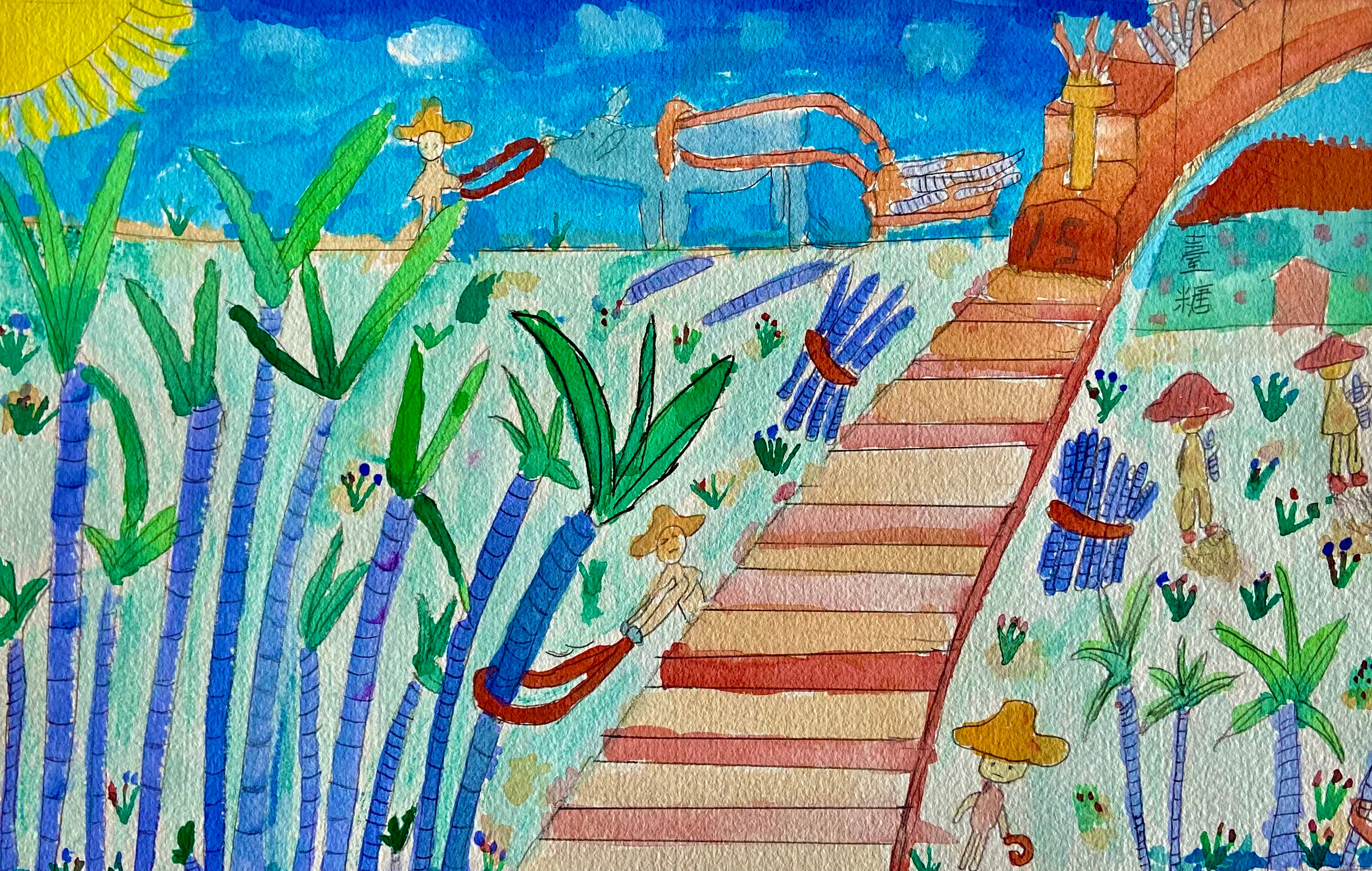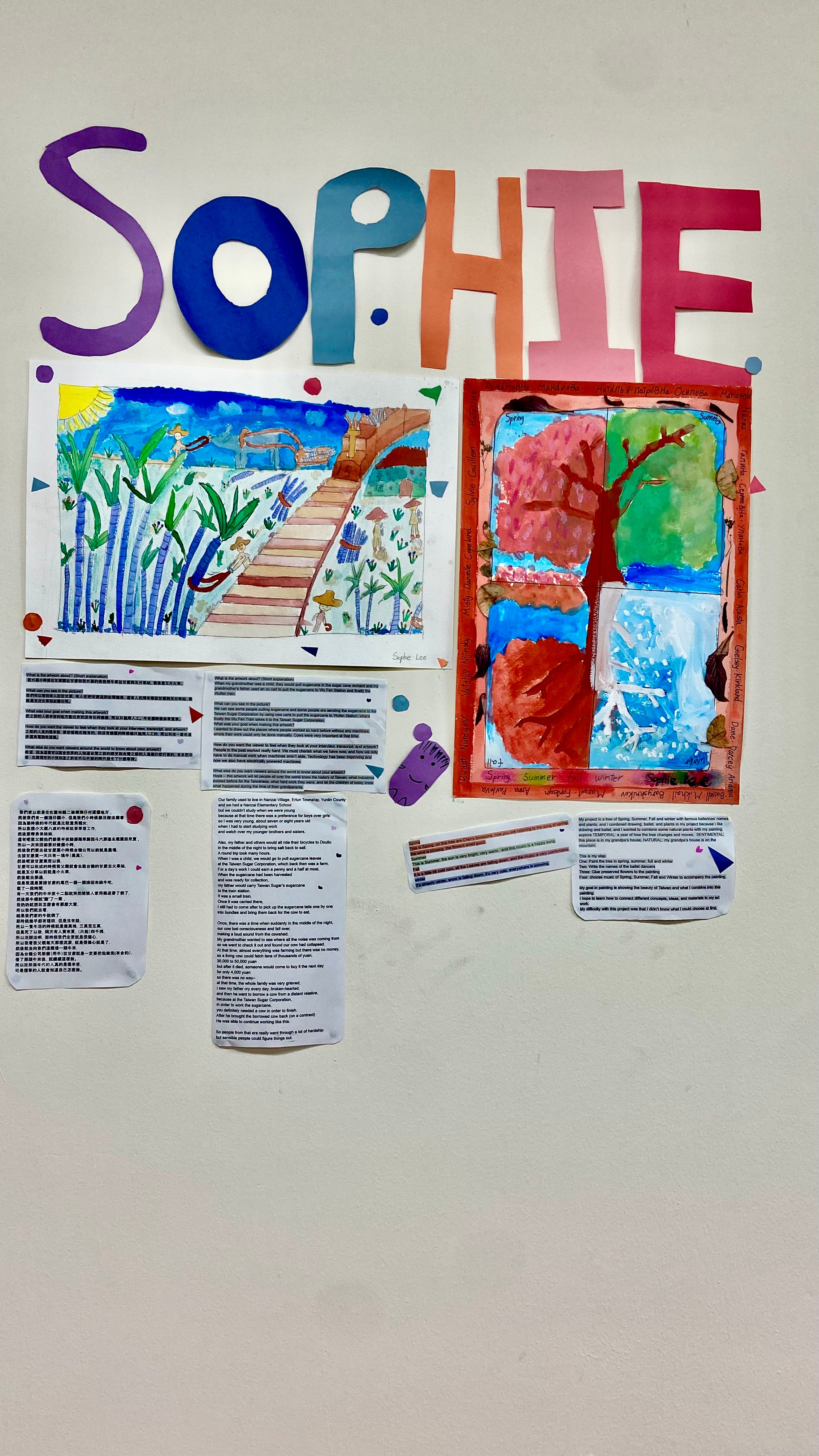Sophie L.
TRANSCRIPTS
我們家以前是住在雲林縣二崙鄉湳仔村這個地方,
然後我們有一個湳仔國小,但是我們小時候都沒辦法讀書,
因為那時候的年代就是比較重男輕女,
所以我很小大概八歲的時候就要學習工作,
然後要帶弟弟妹妹,
還有呢我父親他們都要半夜騎腳踏車騎到斗六那邊去載鹽回來賣,
所以一次來回都要好幾個小時,
然後我們要去拔甘蔗葉小時候台糖公司以前就是農場,
去拔甘蔗葉一天只有一塊半(最高),
然後呢拔甘蔗葉完以後,
甘蔗可以收成的時候我父親就會去載台糖的甘蔗去火車站,
就是五分車以前就是小火車,
然後載去那邊,
但是我還是要撿甘蔗的尾巴一捆一捆撿回來給牛吃,
載了一段時間,
有一天我們的牛半夜十二點就突然間被人家用藥迷昏了倒了,
然後那牛棚就“蹦”了一聲,
我奶奶就想說怎麼會有那麼大聲,
所以我們就去看,
結果我們家的牛就倒了,
那時候幾乎都有種田,但是沒有錢,
所以一隻牛活的時候就是幾萬塊,三萬至五萬,
但是死了以後,隔天有人要來買,(只能)四千塊,
所以沒辦法啊,那時候我們全家就是很傷心,
所以我看我父親每天那樣流淚,就是很傷心就是了,
然後就去向我們遠親借一頭牛來,
因為台糖公司那個(用牛)拉甘蔗就是一定要把他做完(有合約),
借了那頭牛來後,就繼續這樣做。
所以說那個年代的人真的是很辛苦,
可是懂事的人就會知道自己怎麼做。
Our family used to live in Nanzai Village, Erlun Township, Yunlin County
and we had a Nanzai Elementary School
but we couldn't study when we were young
because at that time there was a preference for boys over girls
so I was very young, about seven or eight years old
when I had to start studying work
and watch over my younger brothers and sisters.
Also, my father and others would all ride their bicycles to Douliu
in the middle of the night to bring salt back to sell.
A round trip took many hours.
When I was a child, we would go to pull sugarcane leaves
at the Taiwan Sugar Corporation, which back then was a farm.
For a day’s work I could earn a penny and a half at most.
When the sugarcane had been harvested
and was ready for collection,
my father would carry Taiwan Sugar’s sugarcane
to the train station.
It was a small train.
Once it was carried there,
I still had to come after to pick up the sugarcane tails one by one
into bundles and bring them back for the cow to eat.
Once, there was a time when suddenly in the middle of the night,
our cow lost consciousness and fell over,
making a loud sound from the cowshed.
My grandmother wanted to see where all the noise was coming from
so we went to check it out and found our cow had collapsed.
At that time, almost everything was farming but there was no money,
so a living cow could fetch tens of thousands of yuan,
30,000 to 50,000 yuan
but after it died, someone would come to buy it the next day
for only 4,000 yuan
so there was no way–
at that time, the whole family was very grieved,
I saw my father cry every day, broken-hearted,
and then he went to borrow a cow from a distant relative,
because at the Taiwan Sugar Corporation,
in order to work the sugarcane,
you definitely needed a cow in order to finish.
After he brought the borrowed cow back (on a contract)
He was able to continue working like this.
So people from that era really went through a lot of hardship
but sensible people could figure things out.
ARTIST STATEMENT
What is the artwork about?
我外婆小時候在甘蔗園拉甘蔗和我外婆的爸爸用牛車拉甘蔗到五分車站,最後是五分火車。
When my grandmother was a child, they would pull sugarcane in the sugarcane orchard and my grandmother's father used an ox cart to pull the sugarcane to Wufen Station and finally the Wulfen train.
What can you see in the picture?
我們可以看到有人在拉甘蔗,有人在把甘蔗送到台灣糖業,還有人在用牛車拉甘蔗到五分車站,最後是五分火車和台糖公司。
We can see some people pulling sugarcane and some people are sending the sugarcane to the Taiwan Sugar Corporation by using cow carts to pull the sugarcane to Wufen Station, where finally the Wu Fen Train takes it to the Taiwan Sugar Corporation.
What was your goal when making this artwork?
把之前的人很辛苦的地方畫出來和沒有任何機器,所以只能用人工。 牛在那時候非常重要。
I wanted to draw out the places where people worked so hard before without any machines, where their work could only be done manually. Cows were very important at that time.
How do you want the viewer to feel when they look at your interview, transcript, and artwork?
之前的人真的很辛苦,要珍惜現在擁有的,和沒有機器的時候都只能用人工的,所以科技一直在進步還有電動收遮機。
People in the past worked really hard. We must cherish what we have now, and how we only have to do manual work when machines aren’t able. Technology has been improving and now we also have electrically powered machines.
What else do you want viewers to know about your artwork?
希望,因為這樣可以讓全世界的人知道台灣之前的歷史和台灣之前的人是做什麽行業的,有多麽辛苦,也讓現在的小孩知道之前在外公外婆的時代發生了什麼事情。
Hope – this artwork will let people all over the world know the history of Taiwan, what industries existed before for the Taiwanese, what hard work they were, and let the children of today know what happened during the time of their grandparents.

